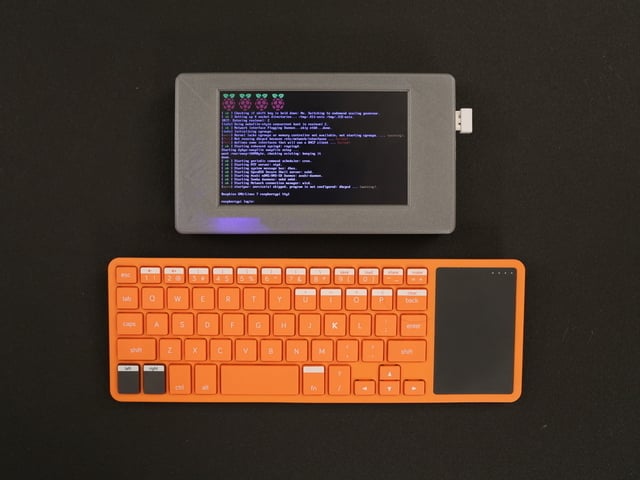3D Printed Parts
All of the parts are 3D printed with FDM type 3D printers using various colored filaments. All of the parts are separated into pieces to make 3D printing easier. Assembly is pretty easy and straight forward. Use the links below to download the STLs files.
What If I Don't Have A 3D Printer?
Not to worry! You can use a 3D printing service such as 3DHubs or MakeXYZ to have a local 3D printer operator 3D print and ship you parts to you. This is a great way to get your parts 3D printed by local makers. You could also try checking out your local Library or search for a Maker Space.
Multi-Color Parts
Boomy's face plate was 3D printed in different colored filaments. This can actually be done with single extruder 3D printers – dual extrusion is not required! To achieve a multi-color effect, the face and buttons are designed to be 3D printed in different gcode files. Follow our previous guide to learn how to use this technique in 3D printing slicing software.
Ninjaflex Buttons
The button actuators can be 3D printed in ninjaflex filament. There's several different types of TPU / rubber filaments, such as FilaFlex, Cheetah, and Tough Ink. Any of them should be suffice. I used Tough Stuff Impact black from Micro3D. If your 3D printer isn't capable of using TPU, you can optionally use hard PLA filament and split the buttons into pieces so they're separated from each other.
Case Assembly
The parts in this assembly are secured together with a combination of hardware and snap fit. The handle grip, for example, simply clips onto the handle bar. The bar is secured to the box frame with machine screws.
Mounting Plate Assembly
The mounting plate is installed and secured to the box frame with longer M2.5 x 12mm machine screws and two M2.5 nuts.
Board Assembly
This animated GIF shows how the boards are secured to the mounting plate with hardware. A combination of M2.5 flat Phillips screws and hex nuts are necessary to mount the PCBs to the standoffs.
Button Assembly
The soft buttons are actuated with a 3D printed Ninjaflex buttons. These 8mm switches are mounted to a PCB or 3D printed plate. The plate is secured to the side off the case with 2x M2.5 machine screws.
Speaker Assembly
The speakers feature tabs with mounting holes. These are press fitted into the tabs holders on the inside of the case.
3D Model & Components
All of the parts were designed in Autdoesk Fusion 360 and available to download and modify. The source contains 3d models of components such as the speakers, Raspberry Pi, and Adafruit Speaker Bonnet. You can use these models for reference in your future enclosure designs!
Screw Tap
The mounting plate has several standoffs for mounting the PCBs. You'll want to use an M2.5 size screw tap to create threads in the standoffs of the mounting plate. This makes fastening the screws much easier than creating threads with screws.
3D Printed Case
The case is a fairly large part to 3D print – 140mm x 80mm x 50mm. To speed up the print time, I suggest setting the layer height to 0.3mm. This part does not require a fine resolution, so printing at a 0.3mm layer height is suffice. This part does not require any support material.
Clip Grip onto Handle
The handle grip is designed to snap and clip onto the center of the handle bar. Install the grip so the opening is facing the bottom of the bar. You'll need to use a bit of force to clip the grip onto the bar.
Attach Handle to Case
You'll need two short #4 wood screws to secure the handle assembly onto the case. Insert the ends of the handle bar onto the little indentations on the side of the case. Then, hold the handle assemble onto the case and insert the screws at an angle. Fasten until fully tightened.
Case Assembly
You'll want to test fit the case assembly. It's important to use the right size screws or else things might now line up perfectly. I highly suggest using a screw tap to create threads in the mounting plate. You an optionally use glue in places where it works, like the handle assembly.
Install Port Plate
A separate plate features various opening for the USB and HDMI ports. This will need to be secured to the cover with glue or adhesives. The orientation matters here, so make sure to reference the photos.
Acrylic Window
If you have access to a laser cutter or CNC mill, you can cut out a window from a piece of 1/8in(3.17mm) thick acrylic sheet. I milled mine on a Bantam Tools desktop CNC. I was able to engrave Lady Ada's Speaker Bonnet eagle board file using the Bantam Tools CNC software.



























